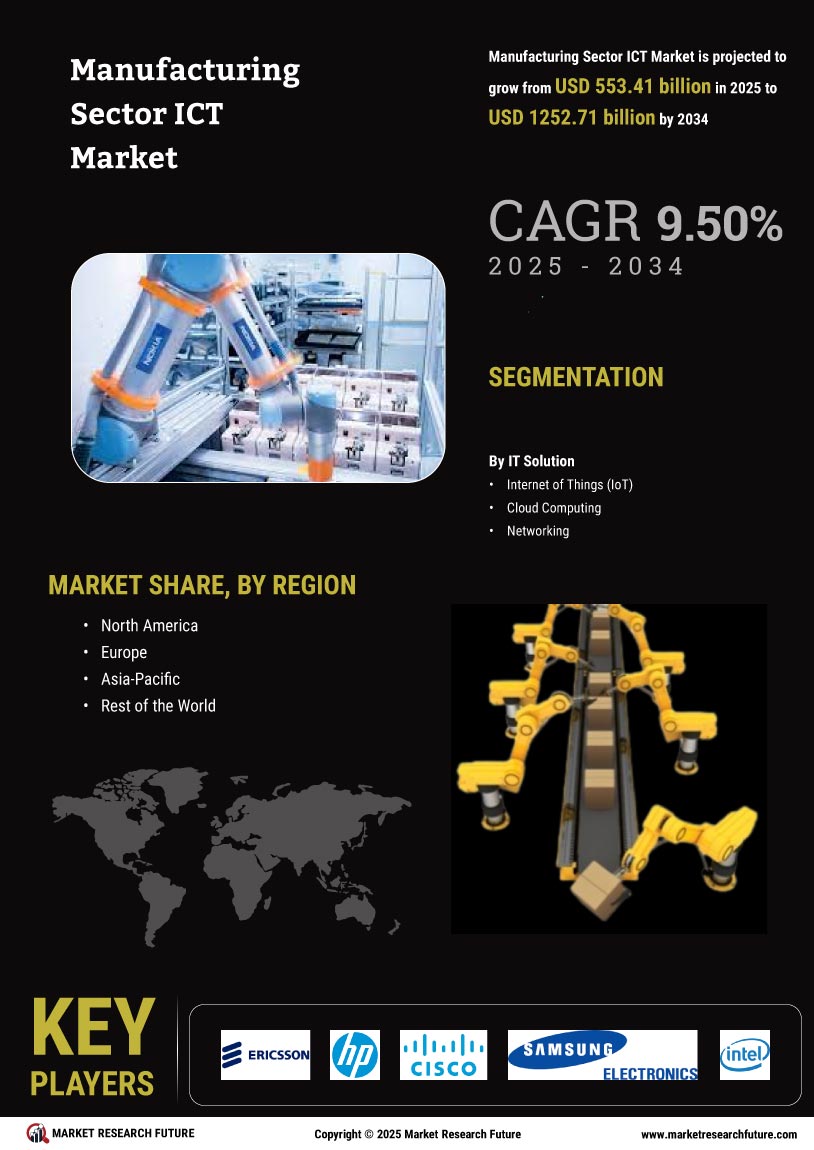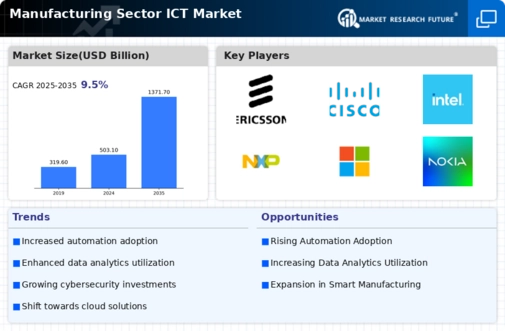Leading market players are investing heavily in research and development in order to expand their product lines, which will help the manufacturing sector ICT market, grow even more. Market participants are also undertaking a variety of strategic activities to expand their footprint, with important market developments including new product launches, contractual agreements, mergers and acquisitions, higher investments, and collaboration with other organizations. To expand and survive in a more competitive and rising market climate, manufacturing sector ICT industry must offer cost-effective items.
Manufacturing locally to minimize operational costs is one of the key business tactics used by manufacturers in the manufacturing sector ICT industry to benefit clients and increase the market sector. In recent years, the manufacturing sector ICT industry has offered some of the most significant advantages to medicine. Major players in the manufacturing sector ICT market are attempting to increase market demand by investing in research and development operations includes Ericsson, HP, Cisco, Samsung Electronics, Intel, NXP Semiconductors, Microsoft, Nokia, Corning, ASML, SONY, Hitachi, Qualcomm, Apple, and Dell.
Mixed signal analog devices are produced by NXP Semiconductors NV (NXP), a semiconductor manufacturer. It provides solutions for digital signal processing, radio frequency (RF), power management, high-speed interface, cryptography-security, and embedded system architecture. RF power amplifiers, sensors, wireless connection products, audio devices, security controllers, application processors, communication processors, analog and interface devices, microcontrollers, connectivity chipsets, and sensors are among the semiconductor items. The company provides services to the Internet of Things (IoT), industrial, automotive, mobile, and communication infrastructure industries.
The company Qualcomm Inc. (Qualcomm) creates and develops services and goods for wireless telecommunication. For mobile smartphones and other wireless products, the company provides integrated circuits and system software. Its product line consists of integrated circuits for wireless connectivity, cellular modems, power management, application processors, consumer wireless devices, and radio frequency transceivers. Products from the company are used in consumer electronics, laptops, cameras, desktop computers, mobile devices, tablets, servers, wireless devices, routers, access points, wearable devices, voice and music devices, network infrastructure equipment, gateway equipment, and IoT devices.























Leave a Comment